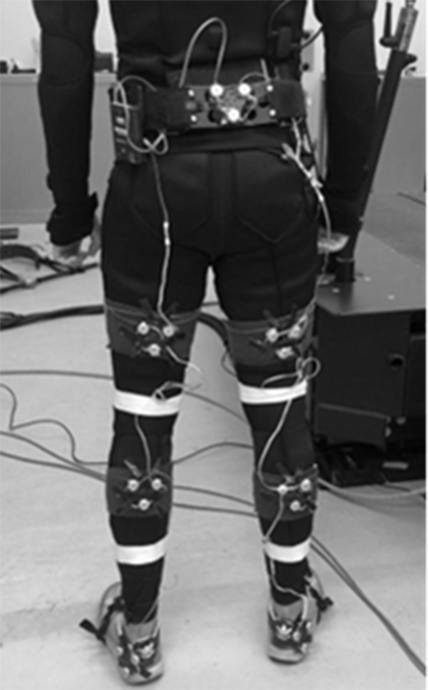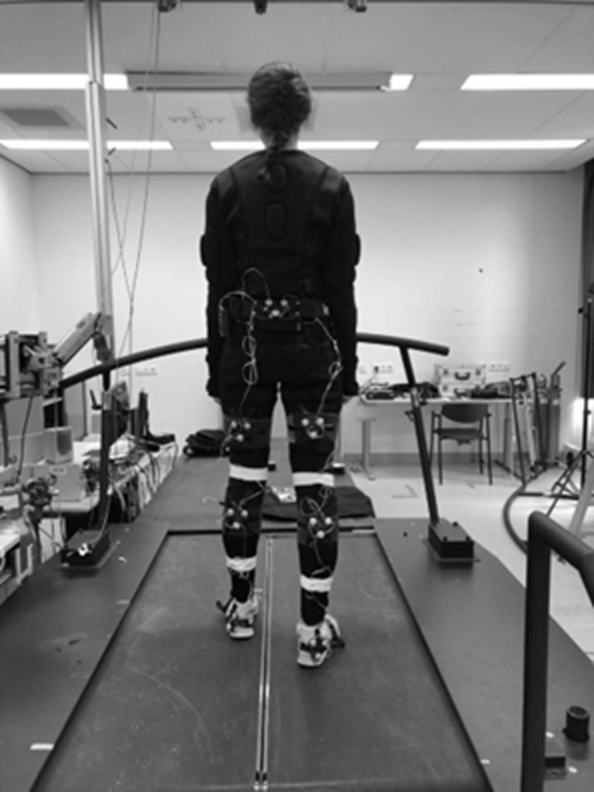Wearable motion capture systems have been advancing rapidly in recent years. These systems use inertial measurement units (IMUs) containing accelerometers, gyroscopes and magnetometers to track human movement without the constraints of laboratory environments. The TESLASUIT’s motion capture capabilities pave the way for new possibilities in motor assessment providing the more accurate and impactful solutions for human movement research, training and rehabilitation.
Introduction
Our research partners at Rehabilitation Centre Reade and the Faculty of Behavioural and Movement Sciences at the Vrije Universiteit Amsterdam conducted a study to evaluate whether a FES-assisted gait training intervention could improve gait function in people with incomplete spinal cord injury (SCI). The research involved the validation of the TESLASUIT’s IMUs that were used to measure lower extremity kinematics during gait analysis.
Procedure
Researchers compared the joint angles calculated from the TESLASUIT’s IMUs to those measured by an optoelectronic system (Optotrak) during treadmill walking at three speeds (1.0 km/h, 3.0 km/h and 5.0 km/h) in 12 healthy participants. The 1.0 km/h walking speed trial was used to imitate the gait pattern of SCI individuals, since walking speed affects the kinematics and spatiotemporal parameters.
The Optotrak system cluster markers were attached over the trousers and jacket (Figure 1).


Picture 1. Placement of Optotrak cluster markers over the TESLASUIT
The participants walked on a treadmill until they had completed 100 steps (about 5 minutes). Output data from the TESLASUIT’s IMUs and Optotrak system were synchronised based on the jump made at the start of each gait trial.
Data Analysis
Optotrak system: The trajectories of the 3D marker coordinate data were calculated with the VU 3D model. The start and the end of each gait cycle were identified by detecting heel strikes and toe offs. Stride times were then determined by the time between two consecutive heel strikes of the same leg. The hip, knee and ankle angles were calculated (Euler angles) for each stride and time normalized (0 – 100% starting at initial contact).
TESLASUIT’s IMUs: The raw data from the IMUs were processed by the OpenSim-based solution being a part of the TESLASUIT’s Software. This resulted into a skeletal model with joint kinematics, including the hip, knee and ankle angles in the sagittal plane. Stride times were determined by the detected heel strikes with the Optotrak system, and the calculated angles were time normalized (0 – 100% starting at initial contact).
Validity was assessed by one-dimensional statistical parametric mapping (SPM) using a two-way (system x walking speed) repeated ANOVA measures for the ankle, knee and hip angle of the left and the right leg.
Pearson’s correlation coefficient was calculated for each participant for the left and the right ankle, knee and hip angle at each walking speed. The lowest and highest correlation coefficients were reported for the left and the right ankle, knee and hip angle at each walking speed.
Results

The results showed a high level of agreement between the knee angles measured by the TESLASUIT’s IMUs and the Optotrak system across all walking speeds. Correlation coefficients between the two systems for knee angles ranged from 0.78 to 0.99. The hip angles also demonstrated good to excellent correlation, with coefficients of 0.80 to 0.99. The ankle angles showed more variability, with coefficients ranging from 0.19 to 0.99, though most participants still achieved a high level of correlation (Table 1. Correlation coefficient of the ankle, knee and hip angles).
While the correlation analyses indicate strong relationships overall, a more detailed analysis of the joint angle waveforms revealed some differences between the two systems. The ankle and hip angles from the TESLASUIT exhibited an offset of 15 to 20 degrees for the duration of the gait cycle compared to the Optotrak. This offset is likely due to the placement of the IMUs, as similar studies have shown that the location of IMUs on the body can impact the accuracy of the joint angles calculated. Researchers mentioned that the placing of pelvic IMU on the TESLASUIT may lead to less accurate hip angles, while the foot IMU, which is placed more on the midfoot, potentially contributing to the offset seen in the ankle angles.
Despite these differences, the validation study results are promising for the use of the TESLASUIT in analyzing lower extremity kinematics during gait. While the suit may benefit from some refinements to the IMU placements to improve hip and ankle angle accuracy, the current knee angles in particular were shown to have a high level of validity. For many applications, this level of accuracy for the knee joint may be sufficient. The portability and usability of the TESLASUIT outside traditional lab environments also provides opportunities for motion capture in more natural, real-world environments.
With some revisions to the IMU positioning and continued validation of the TESLASUIT’s joint angle calculations, our wearable haptic suit could become a valuable tool for gait analysis and rehabilitation. The ability to track movement with a high level of accuracy without the constraints of laboratory environments opens up many possibilities for motor assessment and biofeedback training.
The TESLASUIT is shaping the future of human movement research and therapeutic use cases for wearable technology. If you like to know more about how our technology could bring your research or clinical trial to a new level, drop us an e-mail at sales@teslasuit.io or join our Academic Program.
Source: Research by Rehabilitation centre Reade and at the Vrije Universiteit Amsterdam, Faculty of Behavioural and Movement Sciences (Department of Human Movement Sciences). Research conducted by Simone Berkelmans, MSc.
